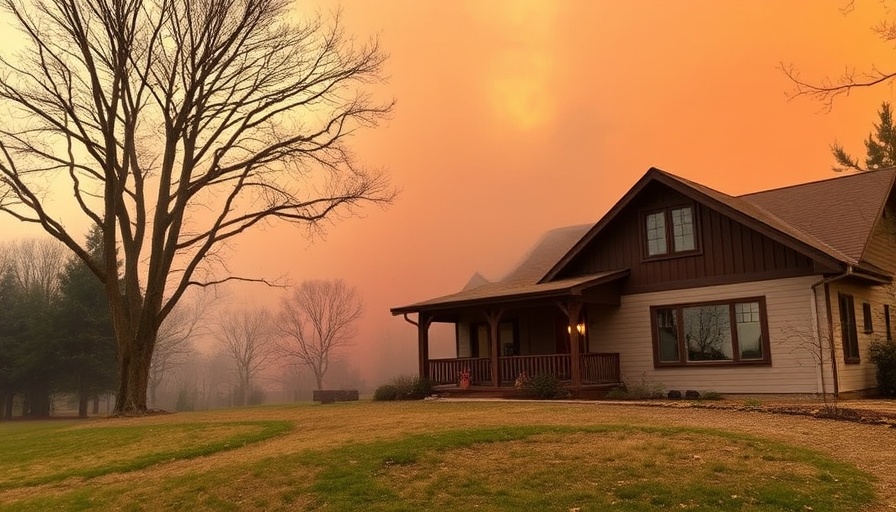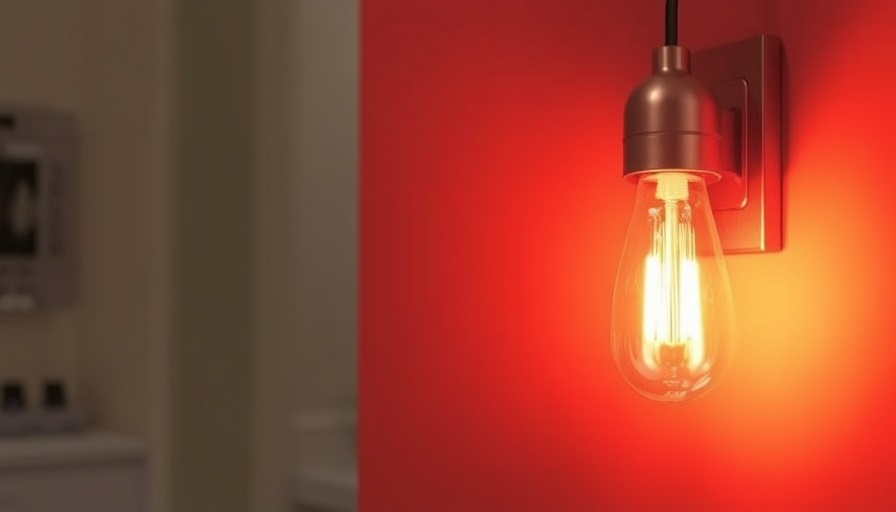
Understanding the Growing Threat of Wildfire Smoke
As climate change continues to amplify the frequency and intensity of wildfires, the risk of exposure to wildfire smoke has become an alarming reality, particularly for homeowners in urban areas like London. Recent research indicates that the health risks associated with wildfire smoke—especially the fine particulate matter known as PM2.5—are more serious than previously understood. Delving into this matter reveals the urgency in protecting our homes and families from its potentially harmful effects.
Why Wildfire Smoke is a Silent Intruder
Wildfire smoke does not merely create an unpleasant odor or hazy skies; it introduces hazardous pollutants into the air that can infiltrate homes even when doors and windows are closed. The tiny PM2.5 particles can penetrate deep into the lungs, leading to significant respiratory issues and exacerbating existing health conditions. Moreover, when combined with the summer heat, the effects of smoke can be magnified, creating a health crisis that is not immediately visible. This reality makes it paramount for homeowners to take proactive measures to safeguard their indoor environments.
Strategies to Enhance Indoor Air Quality
There are several actionable steps homeowners can implement to improve indoor air quality and mitigate the impacts of wildfire smoke. Consider investing in a portable HEPA air purifier, known for its effectiveness in filtering out harmful particles. Ensuring your home is well-sealed also limits the smoke's ingress. Techniques such as weather stripping and using heavy-duty door sweeps can significantly reduce outdoor air contaminants. Furthermore, upgrading your HVAC system with high-efficiency air filters can help trap PM2.5 particles before they circulate through your living space.
The Importance of Vigilance and Preparedness
Staying informed about local wildfire conditions is also critical. Homeowners should sign up for alerts from local fire departments or meteorological services to stay updated on air quality advisories. During wildfire incidents, limiting outdoor activity when smoke levels are high is advisable. Closing windows and using air conditioning—if equipped with appropriate filters—can help maintain a safe indoor environment.
Investing in Sustainability
Beyond immediate protective measures, homeowners may want to consider long-term investments in sustainable building practices that enhance resilience against environmental threats. Implementing green design features, such as durable and non-toxic building materials, not only contributes to overall sustainability but can improve your indoor air quality even in challenging conditions.
Future Predictions: An Ongoing Challenge
The trajectory of climate change strongly suggests that the frequency and severity of wildfires will continue to increase. This indicates a pressing need for homeowners to adopt preventive measures, not just in immediate response to wildfires but as a fundamental part of building lifestyle and home culture. It also emphasizes the importance of public policy that supports environmental health and encourages sustainable infrastructure growth.
Conclusion: Act Now to Protect Your Home
As wildfires and their consequent smoke become a more common threat, protecting indoor air quality cannot be an afterthought. Homeowners in London must embrace prevention strategies today—not just for their health but for the overall well-being of their families. Evaluating air filtration options and making informed decisions about home design and maintenance will be pivotal in navigating this ongoing challenge. The time to act is now—make your home a safe haven against the wildfires looming on the horizon.
 Add Row
Add Row  Add
Add 




Write A Comment